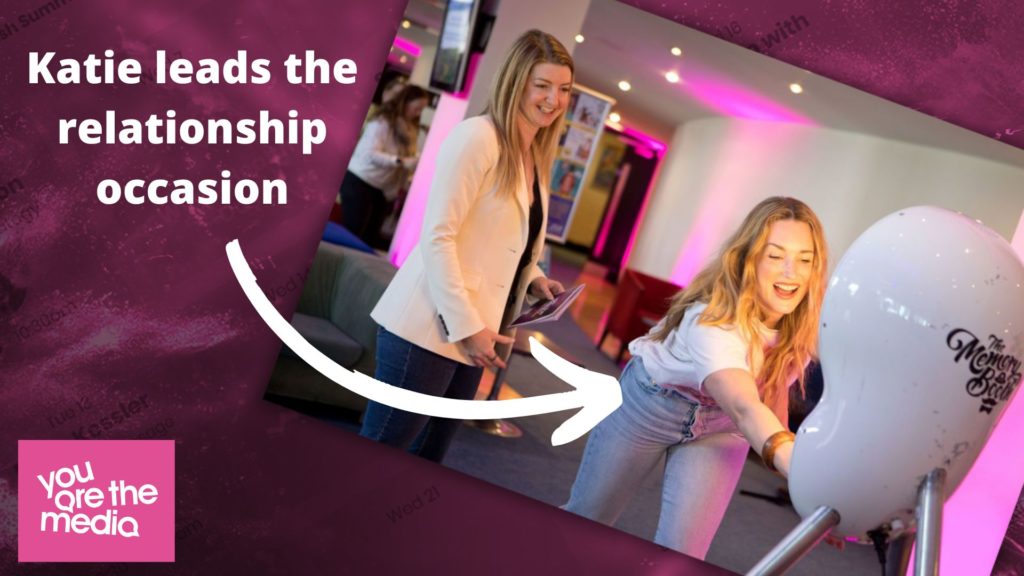Let’s learn and create together!
Book your placeHow to Find and Build On Content Ideas

Having a structure in place for generating content ideas means you’re able to create over and over again.
It’s safe to say that ideas won’t appear whenever you want or need them.
Finding content ideas can be difficult which is why you need a place to start from, an adaptable format for searching and somewhere to store them before you can start developing them into content.
This article will encourage you to create, share, create, share in a way that will define your identity over time, without the process itself becoming a bind.
Where Can You Start?
The biggest challenge lies not in finding ideas to delve deeper into, but knowing what you should pass on and the topics that you should be investing time and effort in.
Producing work that doesn’t look, feel and sound much different from what your audience can find elsewhere is a waste of everyone’s time. Remember, the one thing that puts you ahead of everyone else is the experiences you have had.
When it comes to the ideas and work you share with others, these are six questions I’ve asked myself when putting together material over for the past seven years:
— Why would someone want to spend time with my content?
— What are the topics that can help others (for example, where they don’t end up making the same mistakes I made)?
— What can I say that simplifies what is already out there?
— How can I create something that doesn’t sound/look like everything else?
— Where can I find the balance between creating work that helps and charging for it?
— How can the work produced be shared and promoted?
Straight To It
This section looks to the answer the all-important, ‘where can I get ideas from?’
To draw attention to the subject, what you are reading here:
🧠 The idea for this article came to me two weeks ago
🧠 The various strands of it were explored over the weekends that followed: Weekends are my time for reading, letting ideas flow and capturing them in Evernote
🧠 I started this week writing the article, revisiting and completing it midweek
Being able to constantly generate ideas comes from finding a pattern, creating a schedule and sticking to it. But what if you’re just starting out? How do you find that rhythm?
Here are some suggestions based on what I’ve used, where ideas flow and come to fruition as content:
Study your topic
To share and present your thoughts (audio, writing, video) you have to be driven by some sort of passion. If you don’t have curiosity, it just becomes a job. When it becomes a job, the whole framework changes from sharing to inform to sharing to conform (such as writing with SEO as the main goal). When it’s just another job, it becomes a chore and you could be driven by a calendar, rather than letting your ideas come to fruition.
Read
You shouldn’t just be reading books related to your industry. Read eclectically, branch out into others fields.
Broadening your horizons means you can then start to find the connections and comparisons that’ll make your content more resonant. For instance, if all I read was marketing books then I believe that what I share would become repetitive. Branching out into human behaviour and examining cultural shifts has added variety. Making time to read has played such a huge role for me in terms of finding new ideas to develop.
Resurrect work
Writing for most weeks over the past seven years has meant an even larger bank of work to look back on.
One of the reasons I do this and have kept with it is to be a better writer. What it means is that I can return to work that has already been produced, give it a new slant and improve on the original piece. There will always be people who aren’t familiar with your work so bringing older work back to life, can breath new life into your efforts, giving more people the opportunity to find you.
Answer everyday questions
Being tuned into the week, the people who are a part of it and how it all connects to you can reveal ideas. For instance, this could be an email from a client that opens up a question, the concept behind which you can use as a springboard for sharing publicly.
There was a time when I wished I could have answered questions in meetings in a more considered way. A few years ago someone asked me a gem of whether investing in their company Twitter page could make them an additional £150k. I was taken aback (apart from saying ‘no’) and realised I could have answered it better (It became this article) . Write, record, share to find the answers your clients and prospects are asking.
Steal what’s out there and rearrange it
Entirely new ideas take longer for people to understand, digest and become comfortable with. When you take what is already well documented and modify it to suit you and your audience it makes you a good person or business to get to closer to.
This means you look outside, not just within your own walls for stories, events and points raised. In a recent article, I highlighted that you don’t need to be aiming to be first in your industry as that spot is already taken. Instead of playing by your industry rule book, play on your own terms. Take what influences you and use it. Famous copywriter, Eugene Schwartz said, “You don’t have to have great ideas if you can hear great ideas.”
Create more from something you are currently working on
You can be resourceful by allowing your work to be relevant within more channels. For instance, this article you are reading is helping me with the topic we are sharing on You Are The Media Learning that is about ‘content ideas’ and how to find ideas to build on and find momentum. I am part of the panel and this will become part of my response. I’ll be answering from my own experience but rather than just being put on the spot at the Learning event, I’ll have already formulated a considered response.
Come and join us, it’s free to attend, click here.
Find an initial idea and then develop its thread
Any one idea can hold the seeds of something that you can return to time and again, exploring and expanding on it for many weeks or months even.
For instance, at the start of lockdown, I took whatever I could back to basics and my work effectively became a ‘how to’ exercise. I did this as it was the time for all of us to be harnessing our resources and building something that had meaning for others. We need to be agile, adaptable and recognise what can strike a chord with others at any particular time. Have a look at how to get your first ten email subscribers or questions to ask yourself before you step up to create ongoing content
Next Steps When You Have Ideas
When you begin to have the ideas you can follow up on, you start filling up your treasure chest. Here are some suggestions for it to become a strong place to build from:
Build Your Source – you have to be focused and not think that you have to be everywhere. Start with one place such as your blog and treat this as your source. From your source, you can then branch out into places such as Medium and LinkedIn.
Find Routine – My time to write is the start of the day at the beginning of the week. Find the time that you know you can set aside and write. Maybe the end of the day when the kids are in bed is your quietest time (but bear in mind it can also be when you’re at your most tired). Find a time that is yours to come back to and that you know you’re going to feel enthused in.
Plan Your Week – the focus can’t just be on the creation aspect, your work also needs to be seen. Recognise the time you can blank out each week for promotion. My weeks are organised so that the start of the week is about creating the content and the end of the week is about sharing and amplifying it, starting with Thursday’s You Are The Media Weekly email
Stop Looking For Perfection – Staying true to yourself and putting forward a personal and timely take on something that matters to your audience delivers far greater value than chasing some arbitrary level of accomplishment. Read this article on why you have to stop striving for perfection.
Set Deadlines – You can’t be too indulgent with time. When you have made an appointment with your audience such as by email, send it at the same time every week or month. You have to set yourself deadlines otherwise you can lose momentum. The last thing you want to be doing is giving yourself forever to produce one piece (and so never getting it out there).
Read Aloud – I found that reading what I write helps me judge if it hits the spot in terms of tone and message. If you want your audience to engage with you and feel connected you have to ensure you always come to them from a place that sounds like you. As a bonus, this reading aloud also then means the content can become a podcast. In this way you’re delivering your content in whatever format people prefer. If you click at the bottom of this article, you’ll find I’ll be reading it to you.
Lets Round-Up
To build your bank of ideas, you have to go out and get good at finding them first. There is no one endless space that you can take from.
It can be difficult when you step up to create and are faced with a blank canvas. Finding ways to build ideas and note them down can help in your formulating a process. Sticking with it, creating and sharing, helps you hone how you express yourself and also helps you understand what it is that brings people closer to you.
Content ideas may not be apparent at first but rest assured they are all around you. When you invest the time in finding and recognising where they come from, the creation side becomes a whole lot easier.
LET ME READ THIS ARTICLE TO YOU
Podcast: Play in new window | Download
Build Your Community
A brand new programme from Mark Masters for businesses wanting to make that next growth step.
Find out moreYATM Club
Where non-conformist business owners come to work, learn and make friends. Click here

